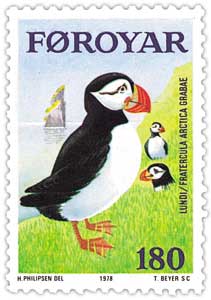A seabird biologist says the sharp decline in Bay of Fundy herring stocks is affecting fragile bird breeds on Machias Seal Island and could threaten the populations. Tony Diamond, who has been researching birds there since 1995, is calling on the federal government to study what is happening to the herring. "If the reduction in the amount of herring in the Bay of Fundy continues, then the prediction is that the adult survival of [Atlantic] puffins will decline. And that will have a negative effect on the viability of the population," he said. The island, located about 20 kilometres southwest of Grand Manan, is an international attraction known for its breeding populations of Atlantic puffins, razorbill auks, Arctic terns, and common terms. Fifteen years ago, the diet puffins and razorbills were feeding their chicks was predominantly made up of juvenile herring, said Diamond. "Herring is the richest source of calories of any of the prey items. So the calories, the amount of energy per gram of prey, is greatest in herring. It's much greater than in hake, which is the alternative food item," he said. His observations coincide with a near total collapse in the herring weir fishery in the bay. Over the past three decades, annual herring weir catches averaged 20,000 tonnes in the Bay of Fundy, according to Grand Manan Fishermen's Association. But in 2013, the latest figures available, the total catch dropped to about 6,000 tonnes. In 2012, less than 500 tonnes was landed. Earlier this month, the fishermen's association called on the federal government to study what is causing the decline in herring stocks.
Source:
CBC News, 23 March 2015
http://www.cbc.ca/news/canada/new-brunswick/herring-decline-threatens-f…

- Log in to post comments
